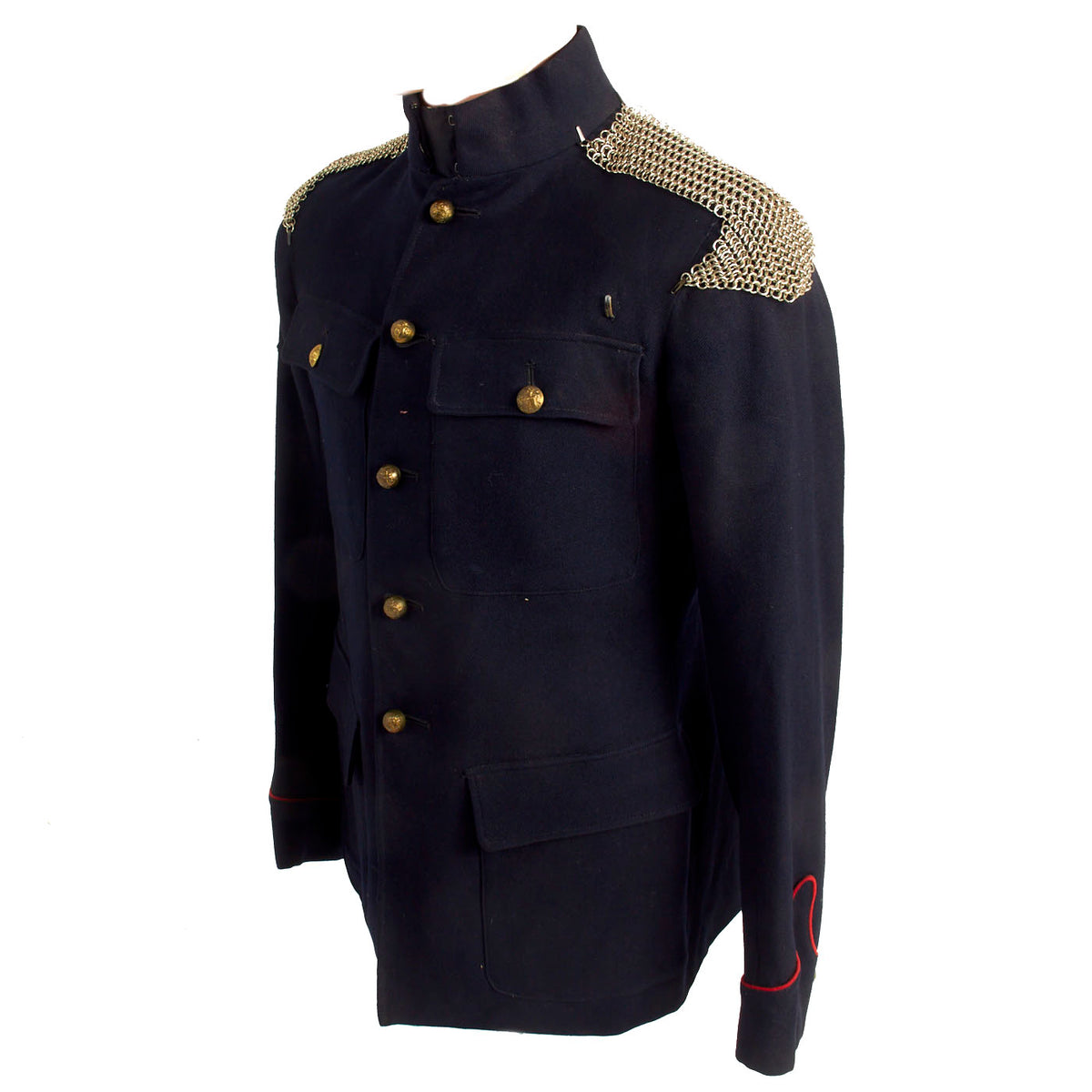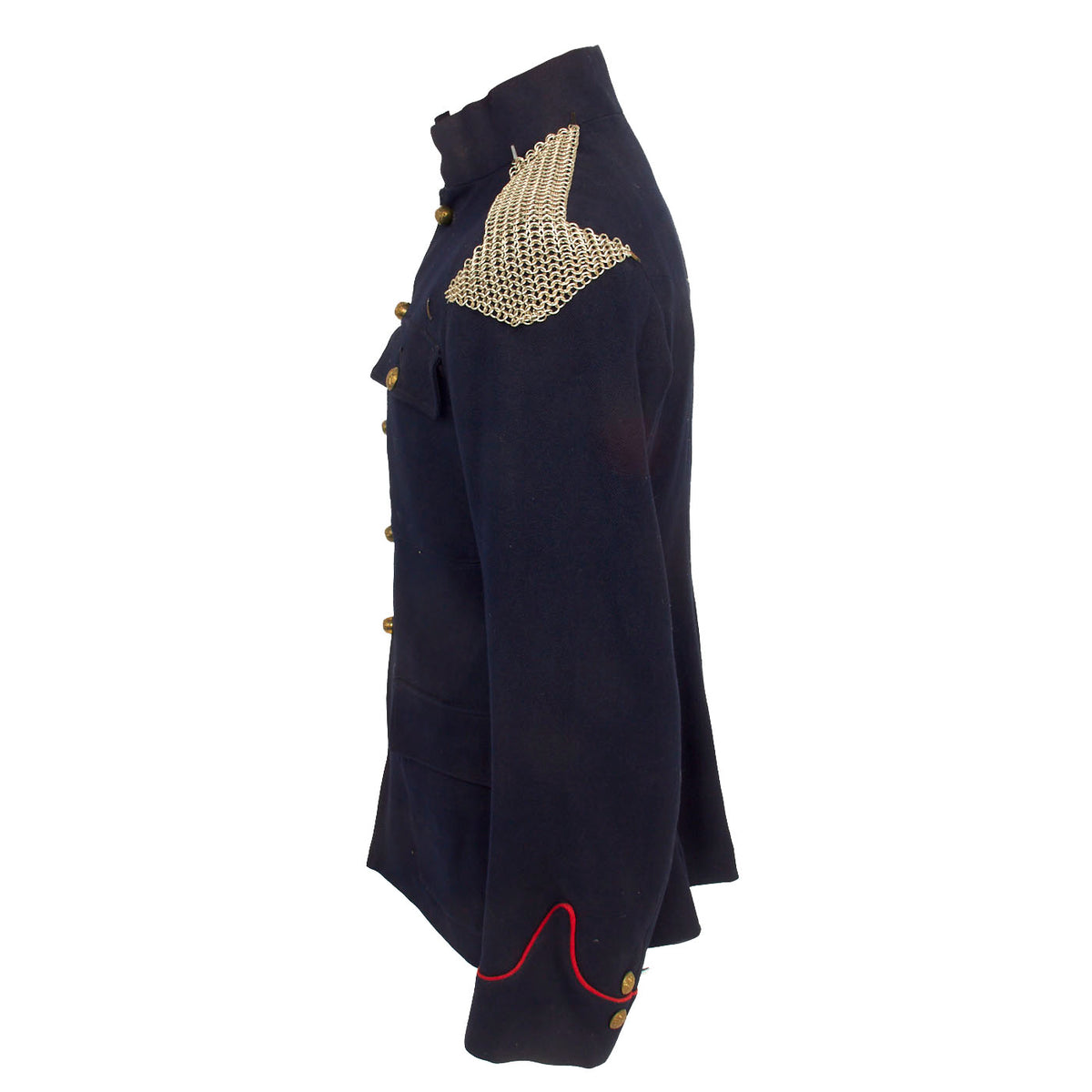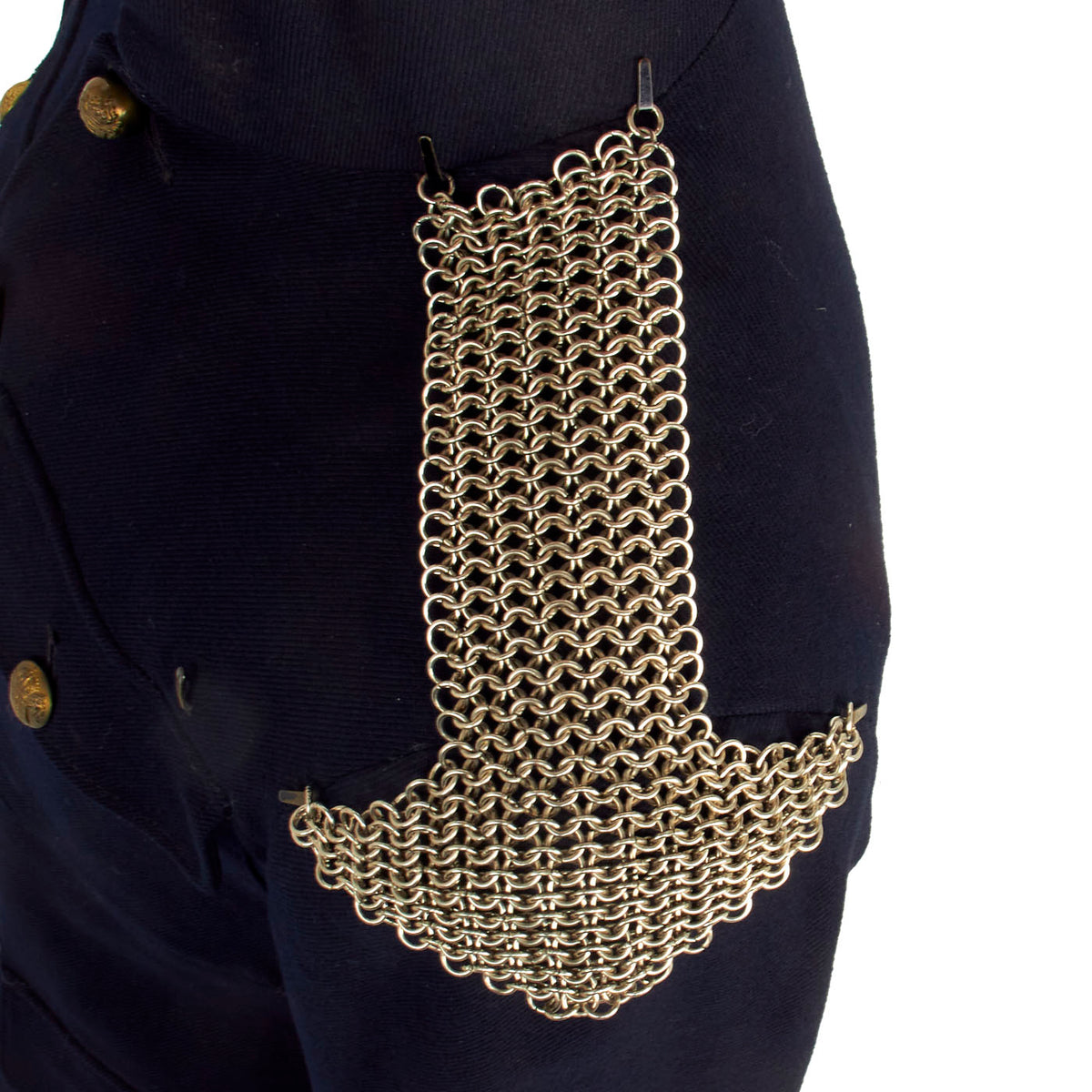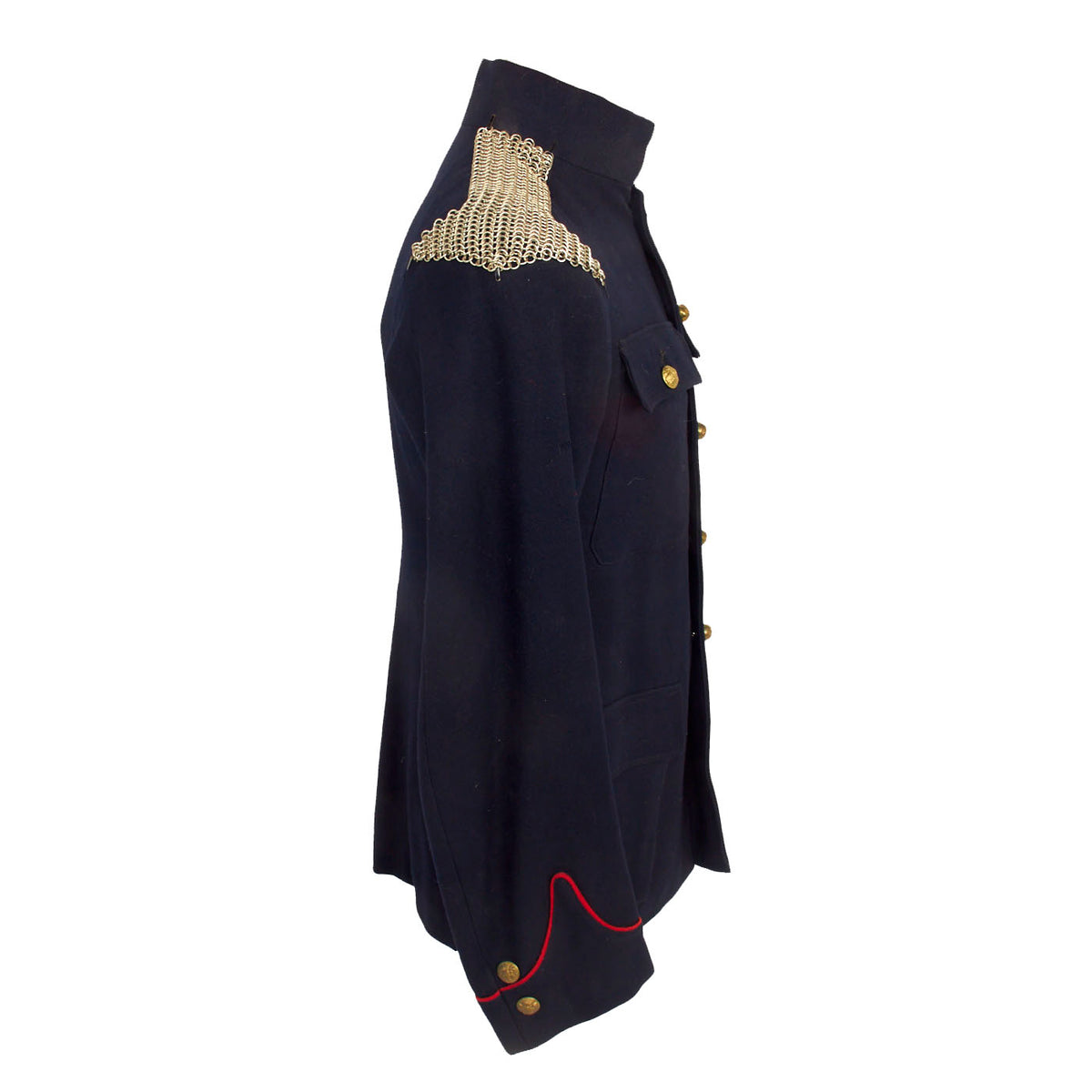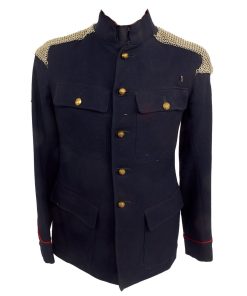Original British WWII Era Royal Army Ordnance Corps No. I Dress Blue Jacket Featuring Chainmail epaulets Original Items
$ 225,00 $ 90,00
Original Item: Only One Available. No. 1 Dress, or “dress blues”, is a ceremonial uniform, worn on only the most formal of occasions and by senior staff officers, aides to the Royal Family, and to the personal staff of senior officers in command. It is not generally issued to all units, with the khaki No. 2 Dress functioning as the main parade uniform.
No. 1 dress originated in the “undress” uniforms (‘blue Patrols’) worn for semi-formal or ordinary duty occasions in the late 19th century. It was first issued in its current form for the 1937 Coronation, intended as a cheaper alternative to the full dress uniforms that had been generally withdrawn after 1914. It became known as No. 1 Dress in 1947. Army units participating in the 1953 Coronation wore the new uniform as a temporary issue.
For most units, No. 1 dress consists of a peaked cap, caubeen or beret; depending on the regiment, dark blue tunic, trousers, overalls (tight-fitting trousers historically worn by mounted troops), or skirts (worn with tights). Units are distinguished by badges and the colors of the cap, tunic piping, vertical stripes (“welts”) on the trousers, and the colour of the collar for certain cavalry regiments. The tunic and trousers of the Royal Gurkha Rifles are rifle green. The Rifles wear a rifle green tunic with black trousers. The Royal Dragoon Guards and the King’s Royal Hussars wear dark green and crimson overalls respectively. Cavalry regiments wear shoulder chains in place of shoulder straps. The Royal Regiment of Scotland wears a short jacket called a “doublet”, in Archer Green. Prior to amalgamation, Highland regiments wore the doublet with the kilt and sporran while Lowland regiments wore trews, both in the individual regiment’s tartan.
In the full ceremonial order of No. 1 Dress, officers wear a waist sash of crimson silk and twisted cord epaulets; while general officers wear a waist sash of gold and crimson stripes. Light cavalry regiments wear a lace cross belt in place of the sash, while Rifle regiments wear a polished black leather crossbelt, as do the Special Air Service and Royal Army Chaplains Department (who have a unique pattern of tunic that features an open step collar instead of a mandarin collar). Other ranks wear a white, buff or black leather belt with a regimental pattern locket, with a bayonet frog if carrying arms.
This lovely WWII era dress blue coat is in wonderful condition and features the lovely chainmail epaulets! Mail was frequently used for the epaulets of military uniforms and it is still used today by the British Territorial Army, and the Royal Canadian Armored Corps of the Canadian Army.
The condition is excellent and all buttons are present and still completely attached to the uniform. There are no unit marks or soldiers’ names written anywhere on the uniform.
Comes more than ready for further research and display.
Approx. Measurements:
Collar to shoulder: 10”
Shoulder to sleeve: 24.5”
Shoulder to shoulder: 17”
Chest width: 18”
Waist width: 17.5″
Hip width: 20”
Front length: 30″
Fast Shipping with Professional Packaging
Thanks to our longstanding association with UPS FedEx DHL, and other major international carriers, we are able to provide a range of shipping options. Our warehouse staff is expertly trained and will wrap your products according to our exact and precise specifications. Prior to shipping, your goods will be thoroughly examined and securely secured. We ship to thousands clients each day across multiple countries. This shows how we're dedicated to be the largest retailer on the internet. Warehouses and distribution centres can be located throughout Europe as well as the USA.
Note: Orders with more than one item will be assigned a processing date depending on the item.
Before shipping before shipping, we'll conduct a thorough inspection of the items you have ordered. Today, the majority of orders will be delivered within 48 hours. The delivery time will be between 3-7 days.
Returns
The stock is dynamic and we cannot completely manage it because multiple stakeholders are involved, including our factory and warehouse. So the actual stock may alter at any time. It's possible that you may not receive your order once the order has been made.
Our policy is valid for a period of 30 days. If you don't receive the product within 30 days, we are not able to issue a refund or an exchange.
You can only return an item if it is unused and in the same state as the day you received it. You must have the item in its original packaging.
Related products
Uncategorized
Uncategorized
Armored Burgonet Helmet & Polearm from Scottish Castle Leith Hall Circa 1700 Original Items
Uncategorized
Uncategorized
Uncategorized
Uncategorized
Australian WWII Owen MK1 Machine Carbine SMG Custom Fabricated Replica with Sling Original Items
Uncategorized
Uncategorized
Uncategorized
Uncategorized
Uncategorized
Uncategorized
Uncategorized
Uncategorized
Armoured Fighting Vehicles of the World: AFVs of World War One (Hardcover Book) New Made Items

